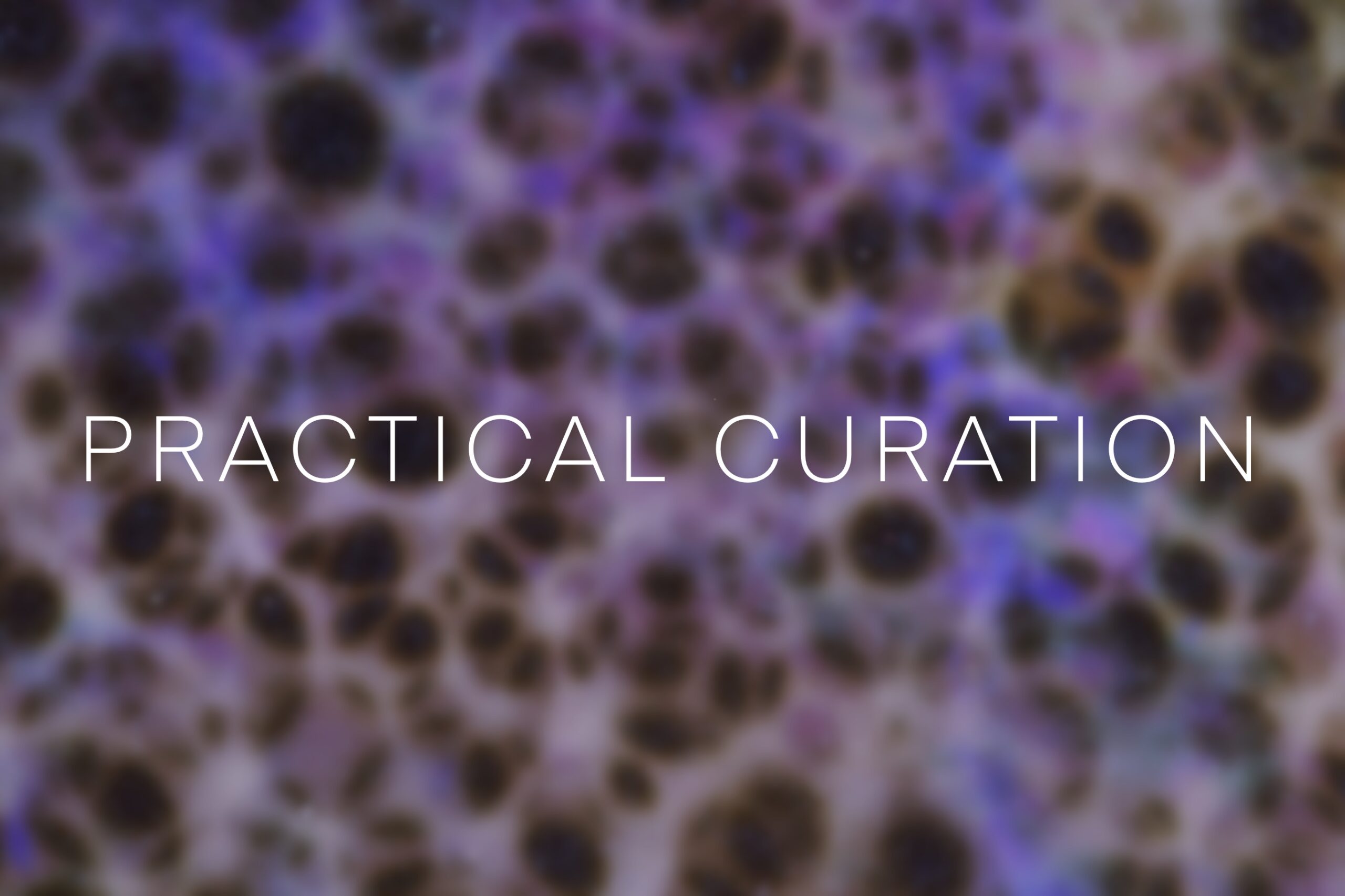Week 10: Practical Research – Ecological Presents in a Micro Exhibition

Introduction
Offered the use of the Summerhall space, I decided to host an ecology-themed exhibition, focusing on one component of my speculative project exhibition narrative.
I intend for this to act as an application of my research in the form of a microcosm of my larger proposed exhibition. Understanding how artwork can be arranged to develop conceptual narratives, I will experiment with placing pieces in conjunction to develop conceptual narratives, forming conversations to conjure unexpected but valuable intersecting ideas and to promote meaning-making in the viewer.
Why is this practical research necessary in the context of the speculative individual project?
In my previous Week 10 post on JP Martinon’s talk, I discussed the repercussions for my project from his statement that aesthetic reduction of socially engaged artwork is inherently unethical, however, necessary in attracting attention to the artist and the message that they communicate. I have struggled to find an appropriate curatorial layout that balances the two, made especially difficult without being able to view my chosen space yet (Strange Field has been closed between exhibitions, opening again on the evening of the 10th of April). Additionally, Martinon mentioned that the curator should think in terms of ‘I know that they do not know.’ The curator must recognize that the audience may not have the expertise to understand the exhibition without appropriate facilitation, aligning with Marco Borsotti’s (2020) statement that the modern exhibition seeks to ‘enlighten’ and ‘inform’ (p. 58). My overarching theme is ‘Friction,’ using multiple overlapping and perhaps contrasting narratives, as well as the concept of weirdness, to create a sense of reflection in the audience. The exhibition framework calls for a disjointed and incongruent layout, making the arrangements of work juxtaposed and strange, while the ethical obligation and pressure to situate the exhibition within the contemporary informative framework command that the exhibition be accessible to the audience as active participants of meaning-making (Macdonald, 2007).
I believe that practically researching how an ecological layout can be completed in a gallery space will grant me greater insight into how to proceed with my curatorial project.
Aims
I aspire to produce promotional material, a curatorial text/written framework, and a physical gallery exhibition, collaborating with two external artists, as well as my own artistic practice. By committing to install the exhibition completely, I will be able to identify areas of labour that contributed to the realization of the exhibition that I may not have previously realized and incorporate the associated time considerations in creating accurate and feasible project timelines.
Finally, this will be completed on a limited budget and rely on my own abilities to prepare physical design and installation material. This problem-solving will be especially useful as both the In vitro gallery and Strange Field do not permit intrusive mounting methods to display work on the walls.
Conceptual exhibition focus
The isolated component of my project that I will be focusing on is the exhibition section focusing on an ecological present. I have encountered a greater quantity of literature that explores ecological temporal concepts of the past (such as Ilana Halperin’s writing on fossil art) and the future (like Donna Haraway’s exploration of speculative fabulation and the proposition of the future Chuthulucene), but little discussing the function of art that is situated in the present of contemporary climate discourse, and therefore little precedent for the way the apparent themes should be expressed within the curation. This is especially important as I intend the exploration of the present to be an activating force of introspection for the viewer and anticipate it to be the final component of the exhibition before attendees leave the gallery. After a one-to-one tutorial with Dr Julie-Louise Bacon, my original structure required re-evaluation, suggesting that work that embodied the viewer may be a way to situate the participant in the present. Though this partially solves my issue I am still left with questions of how to arrange these pieces, or how additional non-performance pieces could have a role within this section. Although I do not anticipate being able to host performance pieces, with in the In Vitro gallery, nor does the space have the support for certain forms of technically dependent work, I believe that completing this test exhibition will give me greater insight for how I can design the presentation of these pieces in my speculative project, as well as the forms of knowledge that can emerge by placing artworks from different contexts in conjunction with each other.
I will define this theme further to respond to the artists’ works included in this micro-project.
Bibliography:
- Borsotti, M. (2020). A Brief Journey through Definitions of Contemporary Exhibition Design: From Display to Narrative and Back. The International Journal of Architectonic, Spatial, and Environmental Design, 14(2), pp.55–66
- Macdonald, S. (2007) ‘Interconnecting: museum visiting and exhibition design’, CoDesign, 3(sup1), pp. 149–162.
- Rogers, N. (1952). [Architecture, Human Measure. Two Exhibition Projects by Albin. Domus, pp.20–21.



